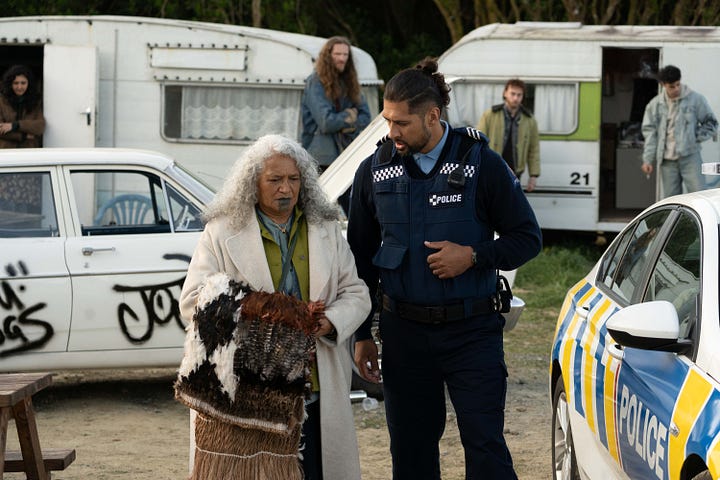Monday new releases: 23 June 2025
28 Years later, Kōkā, Elio and Merchant Ivory are in cinemas.




This weekend Aotearoa New Zealand celebrated the Matariki holiday. On one level it is the “Māori New Year”, the arrival of the Matariki (or Pleiades) star cluster in the night sky marking mid-winter. But on another level it’s also a time of year to remember those who have departed this dimension and call their names so that they may move on to the next. A memento mori, if you will.
Now, I’m pretty sure that the global roll-out of 28 Years Later, Danny Boyle’s new instalment in the 28 … Later franchise, wasn’t specifically timed to coincide with Matariki here but its themes are spookily appropriate – it’s most moving scene explicitly references memento mori and the necessity of memorialising those that have fallen by the wayside, even if you don’t know their names1.
In 28 Days Later (2002), Boyle and screenwriter Alex Garland conjured up a classic horror founded on modern fears of mutating viruses – the “Rage Virus” turns its victims into zombie-like creatures with an insatiable desire to consume human flesh and an impressive ability to sprint. In the sequel, 28 Weeks Later (2007), authorities are trying to contain the virus to the UK mainland without success but in the new picture evidently a successful quarantine has been achieved. The rest of the world is happily going about its business but Britain has been sacrificed.
On Lindisfarne, a small island off the coast of Northumberland, a small group of survivors are protected from the marauding infected because the causeway that connects them to the mainland only appears briefly at low tide. Brave scouts occasionally head across to forage but are told that if they don’t return, there’s no possibility of rescue.
One of these foragers, Jamie (Aaron Taylor-Johnson) has decided that his 12-year-old son Spike (Alfie Williams) is ready to join an expedition and use his bow and arrow skills to secure his first “kill”. Spike’s mother Isla (Jodie Comer) is sick in bed and we don’t know whether she is suffering from PTSD or something more physical. When Spike hears a tale that there might be a surviving doctor on the mainland, he takes the fateful decision to escape from the island with Isla and go and find him.
Each of the three acts of Garland’s screenplay have quite different tones. Act One sets the scene, reminds us of the dangers posed by the infected and introduces us to the “alphas” – the mutated version with increased physical strength and improved executive function. It also shows us how the survivors have retreated socially as well as physically into a kind of “little England”, a sly comment on Brexit if ever there was one.
Act Two expands our world – and Spike’s – as we meet a shipwrecked Swedish soldier (Edvin Ryding) who is slowly realising that he will never be leaving the hell that is northern England, and the mysterious Dr. Kelson (Ralph Fiennes) who has somehow managed to survive alone and Act Three is a profoundly emotional meditation on death. I was surprised to find myself weeping in a zombie movie but there you have it – 28 Weeks Later is Garland and Boyle at the peak of their formidable powers and is wonderfully unpredictable.
Kath Akuhata-Brown’s debut feature Kōkā is a puzzle that I have been pondering on for days. Not just timed for release at Matariki, it is explicitly about Matariki and the process of journeying from the land of the living to whatever comes next2. In the film, an older woman named Hamo departs her rest home for a long trip north to Tairāwhiti where she grew up. On the way, she hits a young Māori woman (Darneen Christian) with her Ford Falcon and becomes embroiled in her various dramas. Or rather they become embroiled in each other’s dramas.
That’s the surface story but it is clear from a very early stage that there’s what you might call ‘magic realism’ at play here. Nothing is quite as it seems which is good because most of the scenes that are ostensibly set in the real world don’t work in those terms at all.
I found myself questioning afterwards whether this was a film that was operating on an indigenous storytelling frequency that I was unable to tune in to or whether it was just not very good and I’ve come around to the conclusion that it is more the former than the latter (even if some of Akuhata-Brown’s choices still don’t work for me3).


